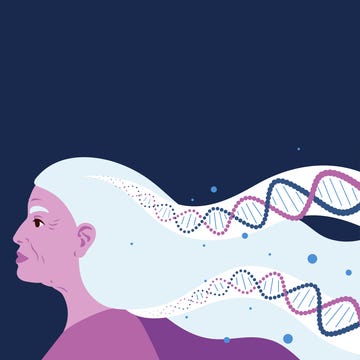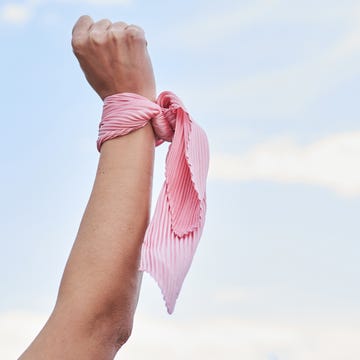The verdict is in: chia seeds are, indeed, nutritional powerhouses. A new study found that chia seed consumption can lower blood pressure and cholesterol, as well as possibly help prevent diabetes and cardiovascular disease. But the connection between chia seeds and health is nothing new: these small-but-mighty seeds have long been touted for their nutritional benefits. Two tablespoons of chia seeds contains nearly 10g fibre and 5g protein, plus omega-3 fatty acids.
If you haven't tried this superfood, now is the time to change that! This ingredient is easy to incorporate into recipes — and a little packs a big nutritional punch. That said, there are a few things to know before you start stirring this seed into anything and everything.
What are chia seeds?
These small, oval-shaped seeds come from the Salvia hispanica plant, a member of the mint family. Native to Central and South America, these seeds have been cultivated for centuries and today can be found in supermarkets across the UK.
Chia seeds nutrition (28g):
- 140 calories
- 9g total fat
- 12g total carbohydrates
- 10g dietary fibre
- 5g protein
What are the best ways to eat chia seeds?
It's important to note that when soaked, chia seeds absorb liquid and turn into a gel-like consistency. This will affect the texture of whatever you're stirring chia seeds into — whether that be smoothies, puddings, homemade jams or something else.
Stir them into porridge
Because a small amount packs such a nutritional punch, adding a spoonful of chia seeds into something you already eat regularly — like porridge — is a no-brainer. Try stirring a tablespoon of chia seeds in to your oats before heating in the microwave. Not a fan of porridge? You can also mix chia seeds into overnight oats as you meal prep a few jars to stash in the fridge for the week.
Make a chia pudding
You can't talk about what to do with chia seeds without bringing up chia pudding. 'Chia pudding is deliciously thick because of the way the seeds absorb liquid,' explains our health editor. Depending on what else you add to the equation, this dish can be enjoyed as a breakfast, snack or fun dessert. No matter when you eat it, know it'll help you stay satiated.
Blend into smoothies
Adding some chia seeds to your smoothie gives additional nutritional punch. Don't add too many, though, because the seeds can change the texture; a tablespoon added to your favourite smoothie recipe should suffice.
Make a jam
This is where chia seeds' ability to absorb liquid and plump up really comes into play in the best way possible. Combining chia seeds with muddled berries and maple syrup results in a naturally thickened (quick!) jam — no need for additional pectin or gelatin.
Boost your energy bites
If you usually DIY these nutrient-dense snacks to stash in your fridge or freezer, stir some chia seeds into your next batch.
Can you eat dry chia seeds?
While less common to eat dry (unsoaked), yes you can eat dry chia seeds sparingly. They will contribute crunch to whatever you sprinkle them on. That can include yoghurt or smoothie bowls, with a handful of granola, as well as salads. Or try them sprinkled on top of bananas with peanut butter.
How do you soak chia seeds?
Soaking chia seeds helps with digestion. Here's how to do it: aim for a 1:4 ratio of seeds to liquid (e.g. milk, nut milk or water). Combine, then let sit at room temperature, until the mixture thickens, which takes about 20 minutes. To make chia pudding, you'll tweak the ratio to increase the liquid, about 1:8 ratio, and stash the chia pudding in the fridge, covered, overnight.
Can you eat too many chia seeds?
In short, yes; eating them in large amounts may lead to digestive issues since they are very high in fibre. Introduce them gradually into your diet; this really applies to any high-fibre food, since you need to allow your digestive system some time to adjust.













